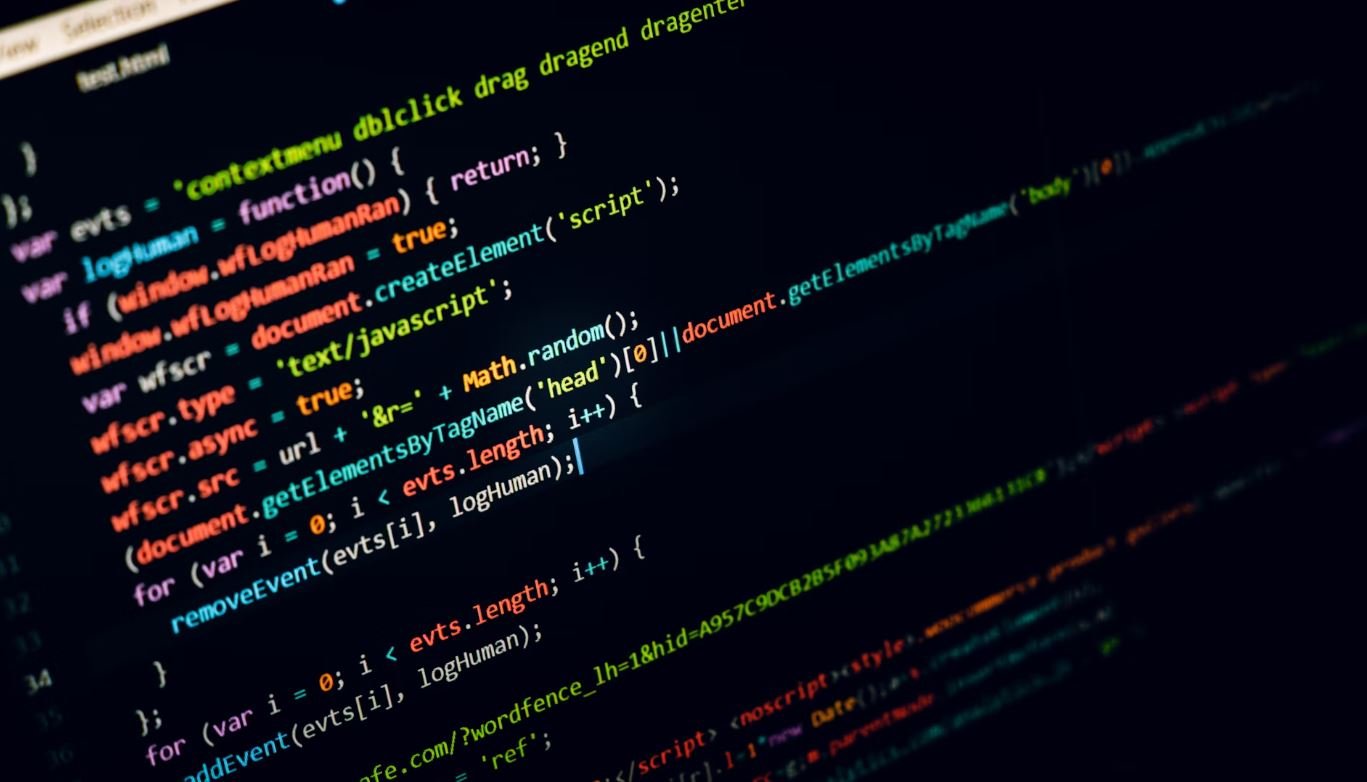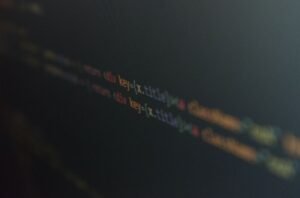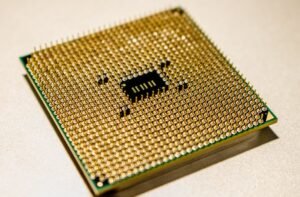Tools Required for Artificial Intelligence
Artificial Intelligence (AI) has revolutionized numerous industries and has become increasingly prevalent in our daily lives. From chatbots to autonomous vehicles, AI technologies are transforming the way we live and work. To develop and deploy AI applications effectively, it is crucial to have access to the right tools. In this article, we will explore the various tools required for artificial intelligence.
Key Takeaways:
- Artificial Intelligence (AI) tools are essential for developing and deploying AI applications.
- There are various types of AI tools, including machine learning frameworks, natural language processing libraries, and data visualization platforms.
- Choosing the right tools for AI projects depends on the specific requirements and objectives.
1. Machine Learning Frameworks
Machine learning is a subset of AI that focuses on training models to make predictions or decisions based on patterns and data. To implement machine learning algorithms efficiently, developers rely on machine learning frameworks. These frameworks provide pre-built tools and libraries that simplify the development process. *TensorFlow* and *PyTorch* are two popular machine learning frameworks widely used by developers.
2. Natural Language Processing Libraries
Natural Language Processing (NLP) is a branch of AI that deals with the interaction between computers and human language. NLP libraries provide developers with the necessary tools to process, analyze, and generate human language data. *NLTK* (Natural Language Toolkit) and *SpaCy* are commonly used NLP libraries that enable developers to build applications for language translation, sentiment analysis, and chatbots.
3. Data Visualization Platforms
Data visualization is crucial in AI projects to understand complex patterns and insights hidden within large datasets. Data visualization platforms allow developers and data scientists to create interactive visual representations of data. *Tableau* and *Power BI* are popular data visualization tools that enable users to transform raw data into meaningful insights through interactive charts, graphs, and dashboards.
Tables:
| Machine Learning Framework | Primary Use |
|---|---|
| TensorFlow | Developing and deploying machine learning models |
| PyTorch | Deep learning research and development |
Table 1: Comparison of popular machine learning frameworks.
| Natural Language Processing Library | Primary Use |
|---|---|
| NLTK (Natural Language Toolkit) | Text processing, sentiment analysis, language translation |
| SpaCy | Text processing, named entity recognition, part-of-speech tagging |
Table 2: A comparison of popular NLP libraries.
4. Reinforcement Learning Platforms
Reinforcement learning involves training agents to make decisions by learning from experience and interacting with an environment. Reinforcement learning platforms provide the necessary infrastructure and tools to implement reinforcement learning algorithms. *OpenAI Gym* and *RLlib* are popular platforms that facilitate the development and evaluation of reinforcement learning models.
5. AI Development Environments
AI development environments provide a comprehensive set of tools and resources for building, testing, and debugging AI applications. These environments often include integrated development environments (IDEs), code editors, and libraries specific to AI development. *Jupyter Notebook* and *Anaconda* are widely used AI development environments that support various programming languages and offer interactive features for data exploration and visualization.
Tables:
| Visualization Platform | Primary Use |
|---|---|
| Tableau | Data exploration, interactive visualizations, business analytics |
| Power BI | Data visualization, reporting, and business intelligence |
Table 3: A comparison of two popular data visualization platforms.
Conclusion
Artificial intelligence is a rapidly evolving field that requires a diverse set of tools to facilitate development and deployment. By leveraging the right tools, developers can unleash the full potential of AI technologies. Machine learning frameworks, NLP libraries, data visualization platforms, reinforcement learning platforms, and AI development environments are essential components in building innovative AI applications.

Common Misconceptions
Tools Required for Artificial Intelligence
There are several common misconceptions surrounding the tools required for artificial intelligence (AI). These misconceptions often arise from a lack of understanding or inaccurate information. It is important to debunk these misconceptions in order to have a clearer understanding of the tools and technologies involved in AI development.
- AI requires expensive and supercomputers
- AI tools can only be used by experienced programmers
- AI tools can replace human intelligence completely
One common misconception is that AI development requires expensive and supercomputers. While powerful hardware can be beneficial for certain AI tasks, it is not a necessity. In fact, AI can be developed and implemented on regular computers and even on low-power devices like smartphones or IoT devices.
- AI can be developed on regular consumer-grade computers
- Specialized hardware can boost AI performance, but it is not a requirement
- Cloud-based AI platforms allow access to powerful computing resources without the need for expensive hardware
Another misconception is that only experienced programmers can utilize AI tools. While AI development can be complex, there are various tools and frameworks available that simplify the process and make it more accessible to developers with different levels of expertise. Many AI tools have user-friendly interfaces and comprehensive documentation, allowing beginners to explore and experiment with AI development.
- AI tools often have user-friendly interfaces that make them accessible to developers with different levels of expertise
- Online tutorials and courses are available to help beginners learn and navigate AI tools
- Communities and forums provide support and guidance for developers with varying levels of experience
A common misconception is that AI tools can completely replace human intelligence. While AI is capable of performing complex tasks and automating certain processes, it is limited in its abilities. AI systems are designed to assist and augment human intelligence, rather than replace it entirely. The human factor, with its creativity, critical thinking, and emotional intelligence, remains essential for decision making and problem-solving.
- AI systems are designed to work alongside humans and enhance their abilities
- Human intelligence brings unique qualities like creativity and emotional intelligence that AI cannot replicate
- Collaboration between AI and humans leads to more effective and efficient solutions
Lastly, there is a misconception that AI is only beneficial for large corporations and organizations with unlimited resources. While big companies do invest heavily in AI research and development, AI tools and technologies are becoming increasingly accessible to smaller businesses and individuals. Open-source frameworks, cloud-based AI services, and affordable hardware options enable startups, SMEs, and individuals to leverage AI technology to enhance their products and services.
- Open-source AI frameworks like TensorFlow and PyTorch provide free resources for AI development
- Cloud-based AI services allow smaller businesses to access advanced AI capabilities without significant upfront investment
- Affordable hardware options like GPUs enable individuals and small teams to experiment and develop AI solutions

Introduction
Artificial Intelligence (AI) has become an increasingly important field in recent years, with advancements in technology and data analysis driving its growth. To effectively develop and apply AI algorithms and models, various tools are required. This article explores different tools that are essential for artificial intelligence projects, highlighting their significance in enabling successful AI implementations.
Data Collection and Preparation Tools
Data is the foundation of AI, and accurate collection and preparation are vital for successful AI projects. The following table showcases some popular tools used for gathering and refining data:
| Tool | Description |
|---|---|
| Pandas | A Python library for data manipulation and analysis. |
| Scrapy | An open-source web crawling framework used for data extraction. |
| Apache Kafka | A distributed streaming platform to handle real-time data ingestion. |
Data Labeling and Annotation Tools
Data labeling is a crucial step to train AI models accurately. The following table presents some tools used for data labeling and annotation:
| Tool | Description |
|---|---|
| Labelbox | A platform that simplifies data annotation and management pipelines. |
| Supervisely | An AI-powered platform for computer vision annotation and data labeling. |
| Amazon SageMaker Ground Truth | A fully managed data labeling service for building high-quality datasets. |
Model Development and Training Tools
Developing and training AI models requires powerful tools for both experimentation and deployment. The following table highlights some essential tools in this phase:
| Tool | Description |
|---|---|
| TensorFlow | An open-source deep learning framework widely used for AI development. |
| PyTorch | A Python library that provides a flexible deep learning development platform. |
| Keras | An easy-to-use high-level neural networks API for fast experimentation. |
Cloud-based AI Services
Cloud providers offer various AI services, allowing developers to leverage pre-built models and infrastructure for their projects. The following table showcases some leading cloud-based AI services:
| Service | Description |
|---|---|
| Google Cloud AI | Google’s suite of AI products and services, including natural language processing and computer vision. |
| AWS AI Services | Amazon Web Services’ suite of AI services, such as speech recognition and text-to-speech conversion. |
| Azure AI | Microsoft Azure’s AI capabilities, including machine learning and cognitive services. |
Deployment and Monitoring Tools
After developing and training an AI model, deploying it to production and monitoring its performance is crucial. The following table presents some tools used in deployment and monitoring:
| Tool | Description |
|---|---|
| Docker | A platform for creating, deploying, and managing containerized applications. |
| Kubernetes | An open-source container orchestration system for automating deployment, scaling, and management. |
| Prometheus | An open-source monitoring and alerting toolkit for tracking metrics and managing alerts. |
Natural Language Processing (NLP) Tools
NLP plays a vital role in AI applications related to text analysis and language understanding. The following table presents some popular NLP tools:
| Tool | Description |
|---|---|
| NLTK | A comprehensive library for symbolic and statistical natural language processing. |
| spaCy | An open-source library providing advanced NLP tools for various languages. |
| Gensim | A Python library for topic modeling and document similarity analysis. |
Computer Vision Tools
Computer vision enables AI models to “see” and analyze images or videos. The following table showcases some key computer vision tools:
| Tool | Description |
|---|---|
| OpenCV | An open-source computer vision and machine learning software library. |
| Dlib | A powerful library offering machine learning tools and models for face recognition and object detection. |
| PyTorch Vision | A PyTorch library providing pre-trained models for image and video recognition tasks. |
Automated Machine Learning (AutoML) Tools
AutoML tools simplify and automate the machine learning process, reducing the need for manual intervention. The following table highlights some popular AutoML tools:
| Tool | Description |
|---|---|
| H2O.ai | An open-source platform that offers automated model building and hyperparameter tuning. |
| DataRobot | A comprehensive AutoML platform that assists with model selection and deployment. |
| Google Cloud AutoML | Google’s AutoML platform providing access to pre-built models and custom model training. |
Conclusion
As AI continues to transform various industries, having the right tools is paramount to successful AI projects. In this article, we have explored a range of essential tools across different AI stages, including data collection and preparation, model development and training, cloud-based AI services, deployment and monitoring, NLP, computer vision, and AutoML. By utilizing these tools efficiently, developers and researchers can unlock the full potential of artificial intelligence and drive further innovation in the field.
Frequently Asked Questions
What are the tools required for Artificial Intelligence?
There are several tools that are essential for Artificial Intelligence (AI) development. These include:
What is Python and why is it an important programming language for AI?
Python is a widely used programming language in AI development due to its simplicity, versatility, and extensive libraries. It provides excellent support for data manipulation, statistical analysis, and machine learning algorithms.
What are data visualization tools and why are they useful in AI?
Data visualization tools help to represent complex data patterns and relationships in a graphical format. They are useful in AI to gain insights, analyze and interpret data, and communicate findings effectively.
Is it necessary to have knowledge of statistics for AI development?
Yes, knowledge of statistics is essential for AI development. It helps in understanding data distributions, making accurate predictions, and evaluating the performance of AI models.
What are the popular machine learning libraries used in AI?
Some popular machine learning libraries used in AI are TensorFlow, PyTorch, Scikit-learn, and Keras. These libraries provide efficient implementations of various machine learning algorithms and enable rapid development of AI models.
What is natural language processing (NLP) and its significance in AI?
Natural Language Processing (NLP) is a subfield of AI that focuses on the interaction between computers and human language. It is essential in AI for tasks such as sentiment analysis, language translation, and chatbots.
Are cloud computing platforms necessary for AI development?
Cloud computing platforms are not mandatory but highly beneficial for AI development. They offer scalable computing resources, storage, and AI services that can accelerate development, reduce costs, and provide easy deployment of AI models.
What role do neural networks play in AI?
Neural networks are a key component of AI and are inspired by the functioning of the human brain. They are used to model complex relationships, learn from data, and make predictions or classifications based on learned patterns.
What is the significance of big data in AI?
Big data plays a crucial role in AI as it provides a large and diverse dataset for training AI models. With more data, AI models can learn better patterns, make accurate predictions, and derive meaningful insights.
Are there any tools specifically designed for AI model deployment?
Yes, there are tools like TensorFlow Serving, Flask, and Docker that ease the process of deploying AI models into production systems. These tools provide efficient ways to serve AI models and make predictions in real-time.





